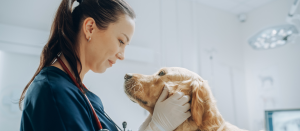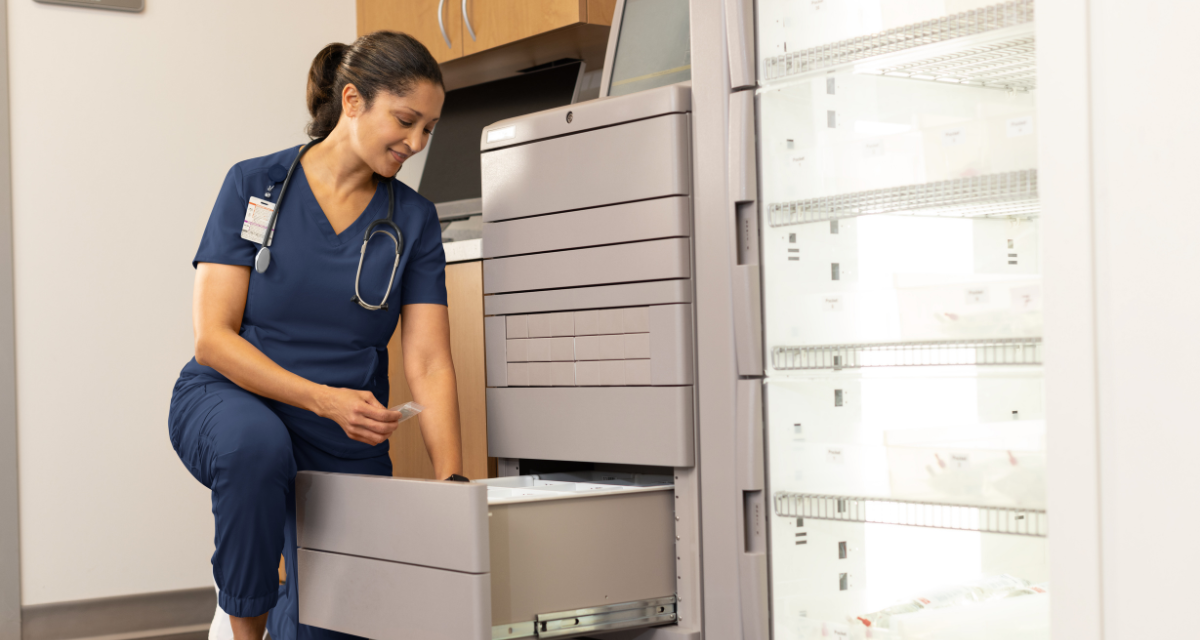Celebrating women in medicine

The 8th of March 2024 hosts International Women’s Day. The campaign theme for this year is “Inspire Inclusion”. We all aim to achieve a sense of belonging, whether this is from family, friends, your community or workplace. However, for much of history, women have faced barriers to inclusion. Particularly within their careers.
So this International Women’s Day, we are celebrating the history, contributions and success of women in medical professions. Whether medical, dental, or veterinary, we are looking at the importance and significance of women’s contributions to medicine and science across time and industries.
The history of women in medicine
Despite the fact that women were discouraged and often excluded from science and medicine in the past, this did not stop them from making valuable contributions to their respective fields. Let’s take a look at just a few of the extraordinary women who made history.
Elizabeth Blackwell (1821-1920)
Elizabeth was the first woman to earn a medical degree (MD) in the United States. In 1849, she graduated from Geneva Medical College, despite facing several rejections from other schools, and hostility from fellow students. Elizabeth went on to open the New York Infirmary for Women and Children alongside her sister. She played a vital role in promoting education for women in medicine throughout the United States and United Kingdom.
Interestingly, Elizabeth was British born, and her studies in an American school are what allowed her to become the first women officially registered by the General Medical Council. “Elizabeth was permitted to register through a clause which allowed women with foreign medical degrees to practise as medical doctors in the UK”.
This loophole allowed her to become a doctor, though it was still frowned upon by medical associations and schools in the UK at the time, and for many years after. She went on to open a medical college in New York City in 1868, shortly after this, she permanently returned to London. This is where she become a professor of gynaecology, appointed by the below, Elizabeth Garrett Anderson.
Elizabeth Garrett Anderson (1836-1917)
Their shared name is not their only connection, Elizabeth Garrett Anderson decided to become a doctor after meeting Dr Elizabeth Blackwell. Elizabeth A was the first female doctor to qualify in England. However, her path to becoming a doctor was not without challenges.
She was not able to enrol in medical school, and so enrolled as a nursing student at Middlesex Hospital. Elizabeth was eventually barred from attending classes with male colleagues, and despite taking the Society of Apothecaries examination and qualifying in 1865, the society decided to change its rules. This was done to specifically ban female entrants.
In 1866 she was appointed as a medical attendant at St Mary’s Dispensary in London. For Elizabeth A, this was not enough. She taught herself French and got a medical degree in Paris, but was still refused entry to the British Medical Register. Despite the constant pushbacks, she set up the New Hospital for Women at St Mary’s Dispensary.
Then in 1874, alongside other passionate women, Elizabeth established the first medical school in the UK to allow women to graduate and practice medicine; the London School of Medicine for Women. Amongst others, her influence encouraged more women to pursue medicine. In 1881, just 25 female doctors practised in England and Wales, increasing to 495 by 1911.
Women in medicine today
Of course, there are so many more women have who have contributed to medicine. Their hard work and determination has lead to an ever decreasing gender gap in medicine in the UK. In 2022, from 376 thousand registered doctors in the UK, 196 thousand were men, and 180 thousand were women.
This is a positive step towards gender equality in medical careers. In fact, female GPs outnumbered their male counterparts by around 9,000 in 2022. More and more women are choosing medical careers, thanks to the sacrifices and struggles of the previous generations. While there are still barriers to women in certain areas, we can acknowledge the encouraging changes in the system.

The history of women in dentistry
Like their medical counterparts, women in dentistry have long been overlooked. Prevented from studying and practising dentistry despite having the interest and skills for the job. Let’s take a look at some of the important women who contributed to the advancement to dentistry.
Emeline Robert Jones (1836-1916)
Once a male only profession, the idea of women in dentistry was unfathomable to many. In one medical journal it was even claimed that “the very form and structure of a woman unfits her for its [dental surgery] duties”. Despite this, some women did express an interest in practising dentistry.
Emeline is widely considered to be the first female practicing dentist in the United States. After her marriage to her dentist husband, Emeline become interested in dentistry and wanted to practice. However, her husband did not entertain this idea for many years. At the time, dentistry was considered “no occupation for the frail and clumsy fingers of a woman”, an idea her husband agreed with.
Undeterred, Emeline practiced secretly, filling and extracting several teeth to hone her skills. After she presented her experience to her husband, he took her on as his assistant and later Emeline went on to become his partner.
When her husband passed, she continued to practice dentistry. She travelled around with her portable dentists chair to treat the people who needed it.
In 1893, she was appointed a member of the Women’s Advisory Council of the World’s Columbian Dental Congress. Later, in 1912, Emeline was awarded honorary membership in the Connecticut Dental Society.
Lucy Hobbs Taylor (1833-1910)
While others are known for being the first women to practise dentistry across the world, Lucy Hobbs Taylor was the first women to be awarded a degree in dentistry. Despite being orphaned at just 12, and working as a seamstress to provide for her 9 siblings, Lucy still pursued an education.
After working as a teacher, Lucy found a passion for medicine, and tried to enrol in two medical schools. Like other woman at the time, she was rejected due to her gender. After expressing an interest in dentistry, she sought guidance and mentorship from professors to get her career started.
Dr Wardel gave her a place in his office with other students, where she practiced dentistry and became a member of the Iowa State Dental Society. She worked tirelessly to develop her skills and reputation as a dentist, and opened her own practice in 1861.
Lucy officially received her degree in 1866, after studying at the Ohio Dental College upon the recommendation of her Iowa colleagues.
Women in dentistry today
Similarly to women in medicine, the number of female dental students and dentists has increased over time. In 2018/19, there were more female NHS dentists in England than male, and this is still the case in 2022/23. The general rise in the number of NHS dentists has been solely driven by the increase in female dentists.
This was made possible by the pioneering work of women in dentistry throughout history. Though, there is some way still to go. For example, in 2021, 21% of “dental practice activities” registered with Companies House were led by women, this unfortunately dropped to just 11% in 2022.
Funding, as well as things like support, mentoring, and coaching for women in dentistry and business are limited when compared with men. The growing number of female dentists is an excellent step, but support and resources must be made available to continue reducing the gender gap.

The history of women in veterinary medicine
Veterinary medicine is no exception to restricting the involvement of women. By 1936, there were only 30 female veterinarians in the United States, in a time where admission to veterinary college for women was virtually impossible. Like other professions within medicine, women had to fight to be admitted to schools, or to practice their skills.
Learn more about some of brave women in veterinary medicine and science.
Aleen Isobel Cust (1868-1937)
Aleen was born in Ireland, and began her veterinary career there. In 1922, Aleen become the first woman to join the Royal College of Veterinary Surgeons register. This was following the passing of the Sex Disqualification (Removal) Act in 1919.
However, Aleen had actually studied at the New Veterinary College in Edinburgh over 20 years prior to her registration with the RCVS. Her studies were completed in 1897, where she won the gold medal for zoology. However, was denied the chance to sit an examination that would allow her to become a member of the RCVS.
Nevertheless, she continued to pursue her passion and eventually made it on the register in 1922. Sadly, Aleen retired shortly after due to ill health, but continued her interest in the veterinary profession.
Generously, Aleen left £5,000 in her will to the RCVS as investment to fund a scholarship in veterinary research. The Aleen Cust Research Scholarship could be awarded to a person of any age, born anywhere in the UK.
Dr Jane Hinton (1919-2003)
Dr Jane Hinton was destined for a career in medicine. Her father, William Hinton was a bacteriologist and one of the most prominent medical researchers of his time. After an education in Europe, Jane returned to the United States and earned a Bachelors degree in 1939.
Upon graduating, Jane worked in her fathers laboratory, and as an assistant to John Mueller. They worked in the Harvard University’s Department of Bacteriology and Immunology. It was here that she helped to develop the Mueller-Hinton agar.
This then became one of the standard methods used to test bacterial resistance to antibiotics. She worked as a medical technician for the U.S. War Department for several years before turning to veterinary medicine. The ending of World War 2 prompted Jane to enrol in the School of Veterinary Medicine at the University of Pennsylvania.
Dr Jane graduated with a Doctor of Veterinary medicine in 1949, being one of the first two African-American female veterinarians in the United States. She went on to join the Department of Agriculture, becoming involved in research and response to outbreaks of disease in livestock.
Women in veterinary medicine today
As we have seen with medical and dental professions, more and more women are also choosing veterinary medicine. According to the RCVS Workforce Summit 2021 “the proportion of new UK-practising registrants who are women has increased overall, and has specifically increased since 2017; from 67% to 77% in 2021”.
However, with all progress comes some areas for improvement. In the same report, it was found that the majority of those leaving the veterinary profession were women, making up 62% of all leavers. The survey also found that of those taking a career break, 79% were women, and some reasons included parental leave, and looking after children.
Maternity leave and raising children is a significant challenge that some women face in their careers, and more support from employers and governments are required. Read more about the women of veterinary history.

The contribution of women to medicine
These are just some examples of the significant and powerful contributions women have made to medical professions over time. Despite constant challenges, disapproval and rejection, these women paved the way for others to pursue their passions.
We feel it is important to remember and celebrate the accomplishments and sacrifices of those who came before us. If you want to support International Women’s Day, you can learn more about the cause, get resources, or donate.



